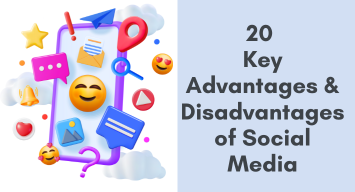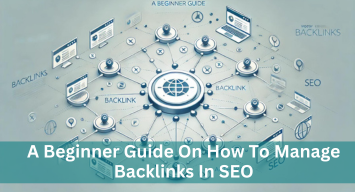What Is a Redirect in SEO? Understanding Different Redirect Types
Redirects are essential in SEO for guiding users and search engines from one URL to another. Whether a webpage is permanently or temporarily moved, redirects ensure that visitors reach the correct destination without hitting a dead end. In this blog, we’ll explore the various types of redirects like 301, 302, and more, their importance in SEO, and when to use them for optimal site performance. What Is a Redirect? A redirect is a method used in web development to send users and search engines from one URL to another. When a webpage has moved, been deleted, or needs to be accessed through a different link, a redirect ensures that visitors are automatically taken to the correct page without encountering a broken link or error page. Redirects in SEO: Overview and Importance Redirecting in SEO is the process of sending a user or search engine from one URL to another URL. In other words, if a user or search engine requests a webpage, he automatically gets redirected to another. This is very important when a webpage is moved, deleted, or its URL structure has changed. There are several types of redirects, 301 (permanent) and 302 (temporary) being among the most popular ones. A 301 redirect tells the search engines that a site has permanently moved to a new location. Most of the SEO value, or “link juice,” that existed on the old page will pass over to the new location of the web page. This is a really important scenario when rebranding, restructuring a website, or consolidating pages. A 302 redirect tells the search engines to leave the original page alone in their index and that the move is only temporary. Maintaining the SEO Value: Through Redirection Redirections: Enabling on-site SEO even updating a URL may include employing redirects to retain some on-site SEO value. If the original URL lacked good redirect placement, the new URL can lose the value of a webpage, especially one with backlinks or ranking authority. One may have the starting point of the sequence of failures leading to reductions in search rankings, organic traffic, and even credibility with users and search engines. A 301 redirect almost ensures most of the SEO value of the original page is passed on to the new page, so the overall authority of the site and ranking will not be damaged. Besides, redirects can prevent broken links—a situation where a webpage no longer exists but its readers or search engines still try to access it. Broken links may affect user experience badly and discourage SEO performance if search engines reduce rankings for sites with numerous dead links. Benefits of Redirects in Relation to User Experience A redirect is important from the user experience perspective. For example, one may try to visit a page only to receive a “404 Not Found” error. Unfortunately, this can frustrate users and make them leave a site, perhaps forever. On the other hand, if a good redirect takes a user to the correct page, that will enhance satisfaction and cut the bounce rate. This improved UX also indirectly influences SEO by favoring those websites that can keep engaged users. Thus, from the website, redirects are a part and parcel of SEO rankings and authority preservation and ensure a smooth and frustration-free user experience. Why are redirects necessary? Redirects are an important part of website maintenance and management. They sort of “signpost” for both users and search engines where content is migrated or changed. Without a redirect, people clicking on old links will find broken pages that lead to a bad user experience and loss of confidence in the website. Likewise, search engines depend upon redirects in order to know where content has been moved so that the site is properly indexed. Redirection does also help in smother navigation, user retention, and the prevention of web crawlers from getting confused by errors. It also helps to preserve traffic and rankings of websites, including the SEO authority of the original pages they might have acquired over time. The proper application of redirects matters to business people and content developers who would want to give a smooth online experience without threatening their search ranks. Handling Broken Links: Broken links are when a URL no longer points to a valid destination, perhaps because the website structure has changed, pages have been deleted, or even because of a typo. Treatment of broken links is crucial to the usability and optimization of a website via the search engine. If left untreated, broken links will surely frustrate the visitors to your website and cause a higher bounce rate, ruining your SEO rankings on that specific website. When search engine bots find too many broken links, it may indicate that the website is not properly maintained and lower your overall ranking. To handle broken links, 301 redirects have to be implemented, which inform users and search engines that the old page has actually permanently moved to a new address. You check your website from time to time and update any broken links you find through Google Search Console or third-party services, which keeps your site in good running condition. Change URLs Businesses are normally bound to change the URL as they rebrand, update the content structure, or optimize for search engines. In this case, it is essential to use redirects to ensure that new URLs point back to the previous ones. In this way, users and search bots will not be confused by this confusion and hence impact the flow of traffic and search rankings negatively. Provided there is correct redirectivity, continuity prevails, where both new and recurrent visitors easily access the updated content without any kind of problem. Migrating Domains After moving the website to a new domain for your business, implementing the redirects is key. Migrating a domain means shifting all the existing content to a new URL structure. Without redirects in place, users will not get access to the web pages, and thus they may encounter errors when trying to … Read more








![200+ Unique Beauty Business Name Ideas [Non AI]](https://rocketranker.co.uk/wp-content/uploads/2024/06/200-Unique-Beauty-Business-Name-Ideas-Non-AI-1.png)

